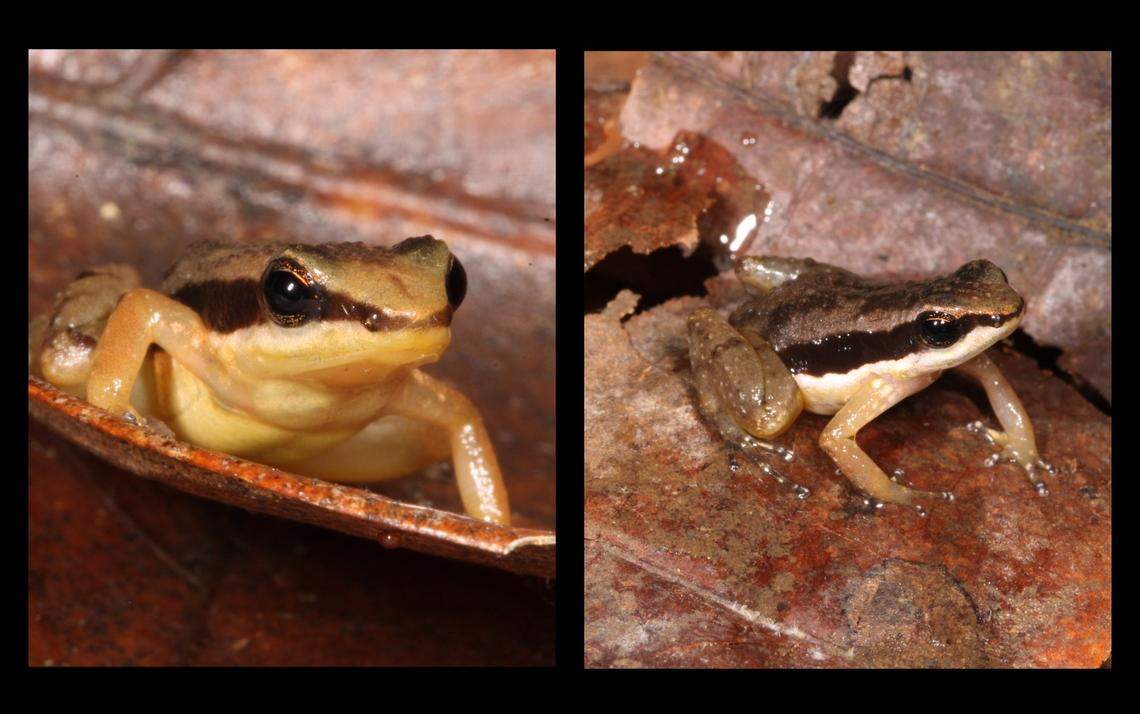Every year, scientists around the globe share exciting discoveries of new species, but, sadly, many others vanish without a trace.
Amphibians, in particular, are in serious trouble worldwide. Researchers often think they’ve found a new species, only to later realize it has already become extinct.
Back in 1963, a couple of researchers stumbled upon a tiny frog about 340 miles south of its expected range in Brazil. This intriguing find was documented in a study published on September 19 in the scientific journal Zootaxa.
Although this frog ended up in the Smithsonian Institution Archives for further study, there was little validation for its existence in that area, leading many experts to assume it was an “almost certainly erroneous” record, as noted in the research.
The site where the frog was found used to be described as a “big field filled with anthills and grass clumps chewed by cows,” surrounded by trees, fields, wetlands, and streams. However, according to author Taran Grant, it has since been transformed into a highly developed area under the city of Curitiba.
But recent studies have revealed that this wasn’t just a stray frog; it belonged to an entirely new species—the red-foot rocket frog—and, heartbreakingly, it’s already extinct.

Explore Other Species Discoveries
Over thousands of new species are identified yearly, and here are three of the latest captivating discoveries.
➡Mysterious ‘Long’-armed Creature Sports Sharp Spines
➡Deep-sea Wonder, a ‘Mythical’ Creature, Marked as New Species
➡7-Foot ‘Cryptic’ Sea Creature Found on Florida Beach
Want to learn more? Check out our articles here.
The species in question, now known as Dryadobates erythropus, was characterized from remains that were “severely dehydrated and extremely fragile,” according to Grant.
This minute frog measured about half an inch and was dark brown due to decades of preservation.
Its peculiar name – the rocket frog – is rooted in ancient Greek and reflects a local Portuguese term for rural inhabitants of Paraná, referring to farmers who worked barefoot on the famous red soil of that region.
Sadly, the news about the red-foot rocket frog is hardly encouraging.
No specimens have been discovered in the last sixty years. The only confirmed habitat where this species existed has been obliterated — suggesting it likely went extinct just as it was being properly identified.
Grant remarks, “Not only does this establish that Dryadobates occupies southern sites of the Atlantic Forest beyond what was known before, but also signifies the fourth species in this lineage to have disappeared in the last 60 years, all within a mere span of 15 to 20 years between the mid-1960s and mid-1980s.”
This raises concerns about potential other species that may have also gone extinct in areas between Angra dos Reis and Curitiba before researchers ever got the chance to discover them.

Researchers have pinpointed several reasons behind significant amphibian losses worldwide.
Primarily, habitat destruction—much like the fate of the red-foot rocket frog’s original environment—is considered the most apparent factor in these losses, as highlighted in the findings.
Amphibians are also under threat from a chytrid fungus called Batrachochytrium dendrobatidis (Bd), previously detected in southeastern Brazil. Past research indicates it was prevalent in local tadpoles from 1979 to 1987, potentially contributing to the decline of the red-foot rocket frog.
Moreover, the compounded effects of climate change and extreme weather patterns over the past four decades have worsened the situation for amphibians. Notable chilly spells in the 1970s and additional climate shifts could have jeopardized an already dwindling population.
The researchers emphasize that as the specific causes behind these recent extinctions remain vague, gathering information on the historical traits, distribution, and local population sizes of living Dryadobates is crucial for identifying threats and ensuring their future survival.
Located in southeastern Brazil, Curitiba sits close to the Atlantic coast.
The research team comprised Grant and his colleague Paulo Durães Pereira Pinheiro.
Ancient Marine Giant – New Species of Right Whale Ancestor Found in Japan
‘Horned’ Creature, Hiding in Plain Sight on Sacred Mountains of China, Identified as a New Species





















